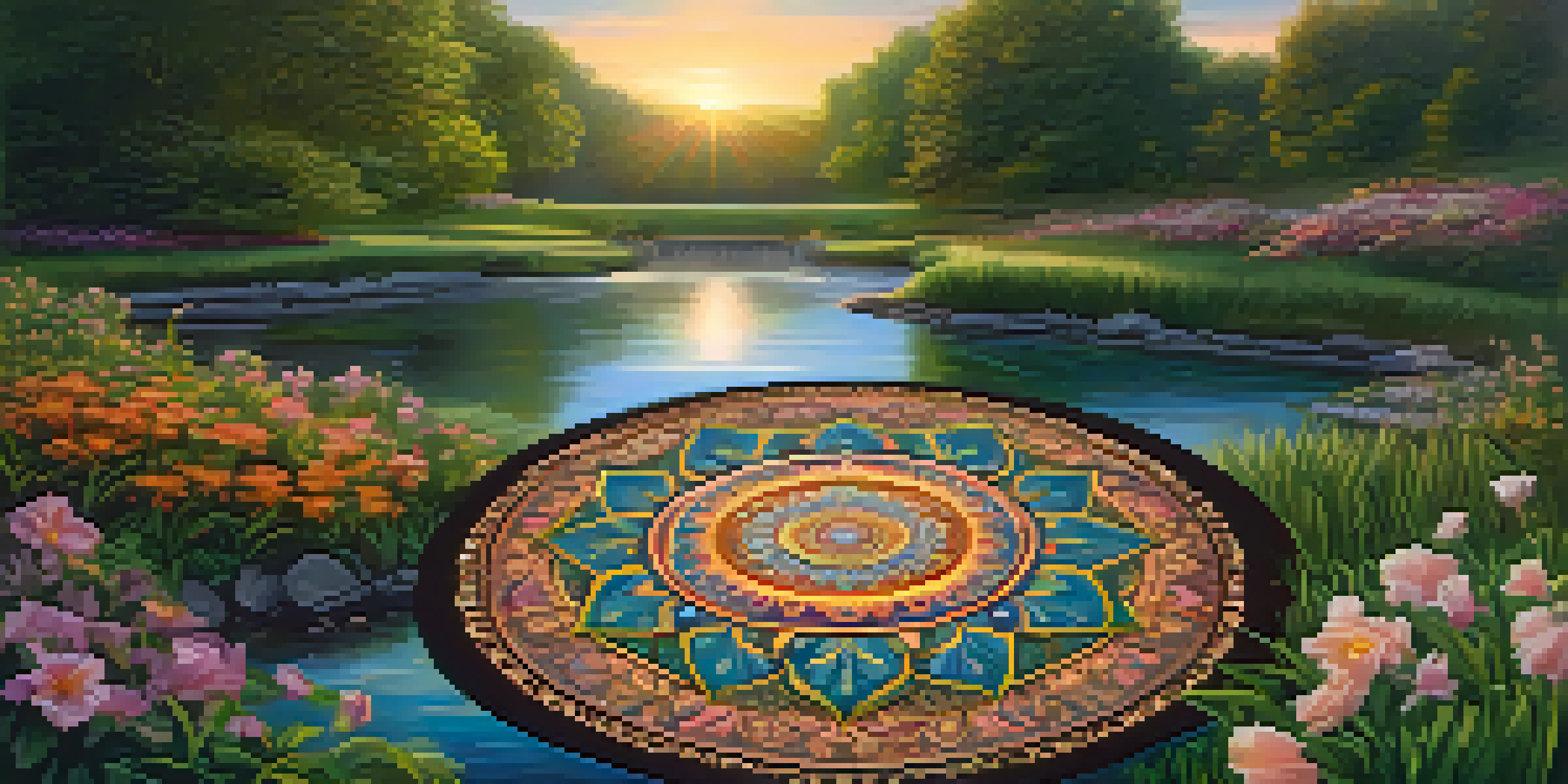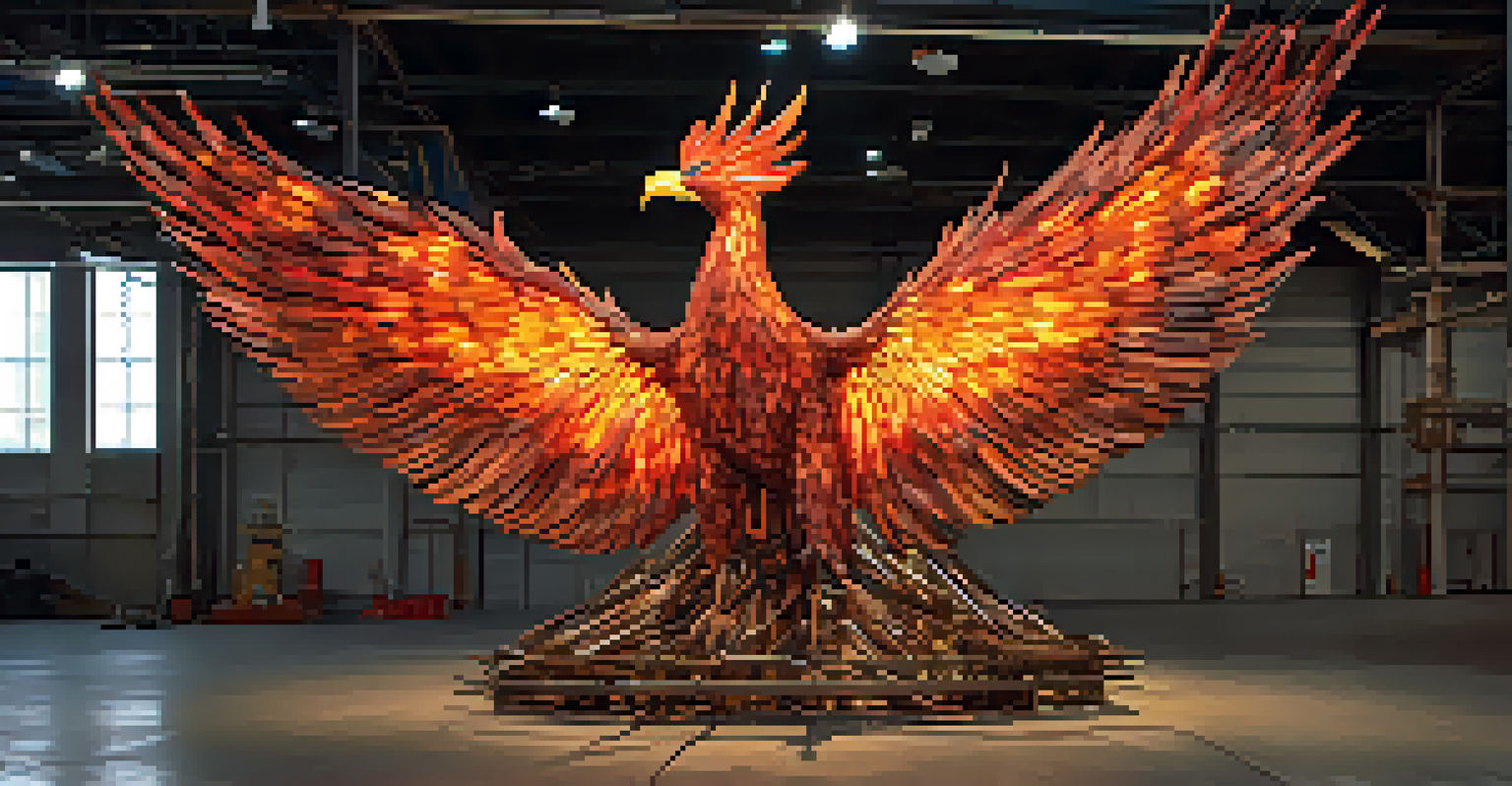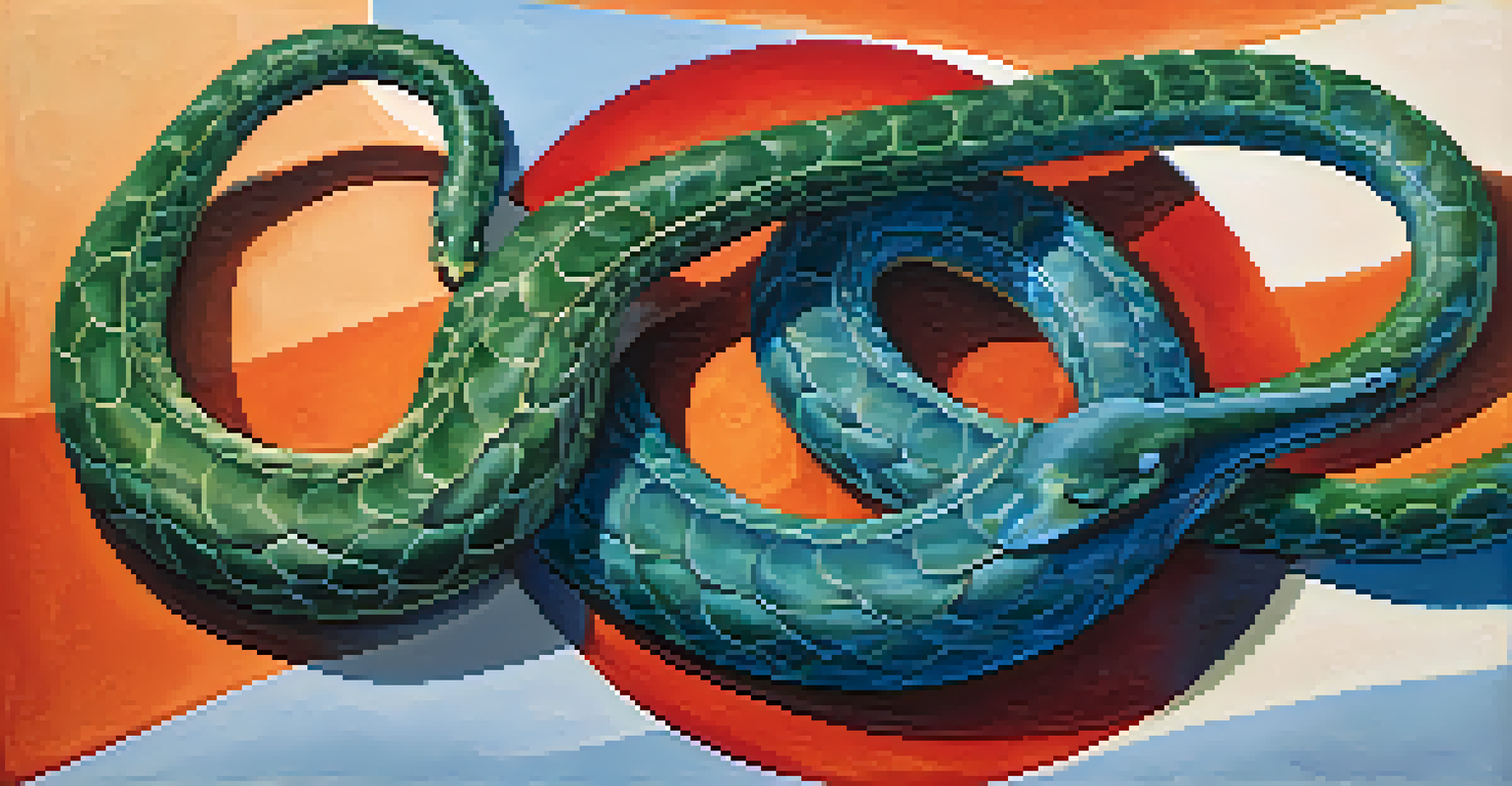Mythology and Spirituality: Art as a Reflection of Beliefs

Understanding Mythology and Spirituality in Art
Mythology and spirituality serve as powerful lenses through which we can view the world. They encompass the stories, symbols, and beliefs that shape cultures and individual identities. Art, in its many forms, often acts as a mirror reflecting these rich traditions, allowing us to explore complex ideas and emotions.
Art is the most beautiful of all lies; it is a bridge between the real and the unreal.
From ancient cave paintings to modern installations, artists have used their work to express spiritual beliefs and mythological themes. This artistic expression not only preserves these stories but also invites viewers to engage with the deeper meanings behind them. It’s fascinating to see how different cultures interpret similar themes through their unique artistic styles.
Ultimately, understanding mythology and spirituality in art enriches our appreciation for the diverse ways humans seek meaning and connection. It helps us recognize that while the forms of expression may differ, the underlying quest for understanding remains universal.
The Role of Symbols in Mythological Art
Symbols play a crucial role in mythological art, serving as visual shorthand for complex ideas. For example, the phoenix represents rebirth, while the serpent often symbolizes transformation or duality. These symbols carry deep meanings that resonate with both artists and audiences, creating a bridge between the known and the unknown.

By using symbols, artists can convey intricate narratives without the need for words. When we see a certain motif repeatedly, it can evoke feelings or memories tied to those myths. This helps viewers connect with the artwork on a personal level, as they interpret the symbols based on their own experiences and beliefs.
Art Reflects Spiritual Journeys
Art serves as a powerful medium for artists to express their spiritual beliefs and explore complex inner experiences.
Moreover, symbols can vary widely across different cultures, adding layers of richness to the artwork. When exploring mythological art, recognizing and understanding these symbols can lead us to deeper insights about the culture from which they originate.
Art as a Vehicle for Spiritual Exploration
Art has long been a powerful vehicle for spiritual exploration and expression. Many artists create works that reflect their spiritual journeys, offering viewers a glimpse into their beliefs and practices. This connection can be seen in various forms, from religious iconography to abstract representations of inner experiences.
The artist is not a different kind of person, but every person is a different kind of artist.
For instance, the intricate designs of mandalas in Buddhist art serve not only as beautiful imagery but also as tools for meditation and spiritual focus. The process of creating art can itself be a spiritual practice, allowing artists to connect with their inner selves and the divine.
Through this lens, art transforms into a form of communication that transcends language. It allows us to engage with and reflect on our own spiritual beliefs, fostering a sense of connection with both the artist and the greater universe.
Cultural Narratives in Artistic Expression
Cultural narratives play a significant role in shaping how mythology and spirituality are portrayed in art. Each culture brings its own unique stories and beliefs, which influences artistic styles and themes. By examining these cultural narratives, we can gain insight into how societies understand their place in the world.
For example, the vibrant colors and bold patterns in African tribal art often tell stories of ancestors and spiritual traditions. Similarly, Indigenous art frequently reflects a deep connection to nature and the spiritual world, showcasing the belief systems that guide these communities.
Symbols Convey Deep Meanings
Mythological symbols act as visual shorthand, allowing artists to communicate intricate narratives and evoke personal connections.
By appreciating these cultural narratives in art, we not only celebrate diversity but also recognize the common threads that unite us as humans. It encourages us to explore our own narratives and understand how they shape our perceptions of spirituality and mythology.
Contemporary Art and Mythological Themes
Contemporary artists are increasingly drawing on mythological themes to address modern issues. By reinterpreting ancient stories, they create a dialogue between the past and present, allowing us to see how these age-old narratives still resonate today. This blend of old and new can evoke powerful emotions and provoke thought.
For instance, a contemporary artist might use the story of Icarus to explore themes of ambition and hubris in today's fast-paced world. By framing these classic tales within a modern context, artists invite us to reflect on our own lives and the choices we make.
This approach not only keeps mythology alive but also engages a new generation in exploring these timeless themes. It shows us that art can be both a reflection of our beliefs and a catalyst for change.
The Impact of Art on Spiritual Beliefs
Art has a profound impact on spiritual beliefs, often shaping how individuals and communities perceive the divine. Whether through paintings, sculptures, or performances, art can inspire awe and provoke deep contemplation. This influence can lead to a re-examination of beliefs and practices, fostering spiritual growth.
For example, religious art can enhance worship experiences, drawing congregations closer to their faith. The beauty and symbolism in these works can create a space for reflection, helping individuals connect more deeply with their spirituality.
Cultural Narratives Shape Art
Each culture's unique stories and beliefs influence artistic styles, enriching our understanding of spirituality and mythology.
Moreover, art can also challenge existing beliefs, prompting discussions and debates within communities. By pushing boundaries and presenting alternative perspectives, artists can inspire change and encourage a more inclusive understanding of spirituality.
Bridging the Gap Between Art and Spirituality
Bridging the gap between art and spirituality involves recognizing the interconnectedness of these two realms. Both serve as vehicles for expression and understanding, allowing us to explore complex ideas about existence, belief, and identity. When we engage with art from a spiritual perspective, we open ourselves to new insights and experiences.
This connection can be cultivated through various practices, such as attending art exhibitions, participating in workshops, or even creating our own art. Engaging with art in this way encourages us to reflect on our beliefs and how they shape our understanding of the world around us.

Ultimately, exploring the relationship between art and spirituality enriches our lives, inviting us to see the beauty and depth in both. It reminds us that while our beliefs may be diverse, the quest for meaning is a shared human experience.